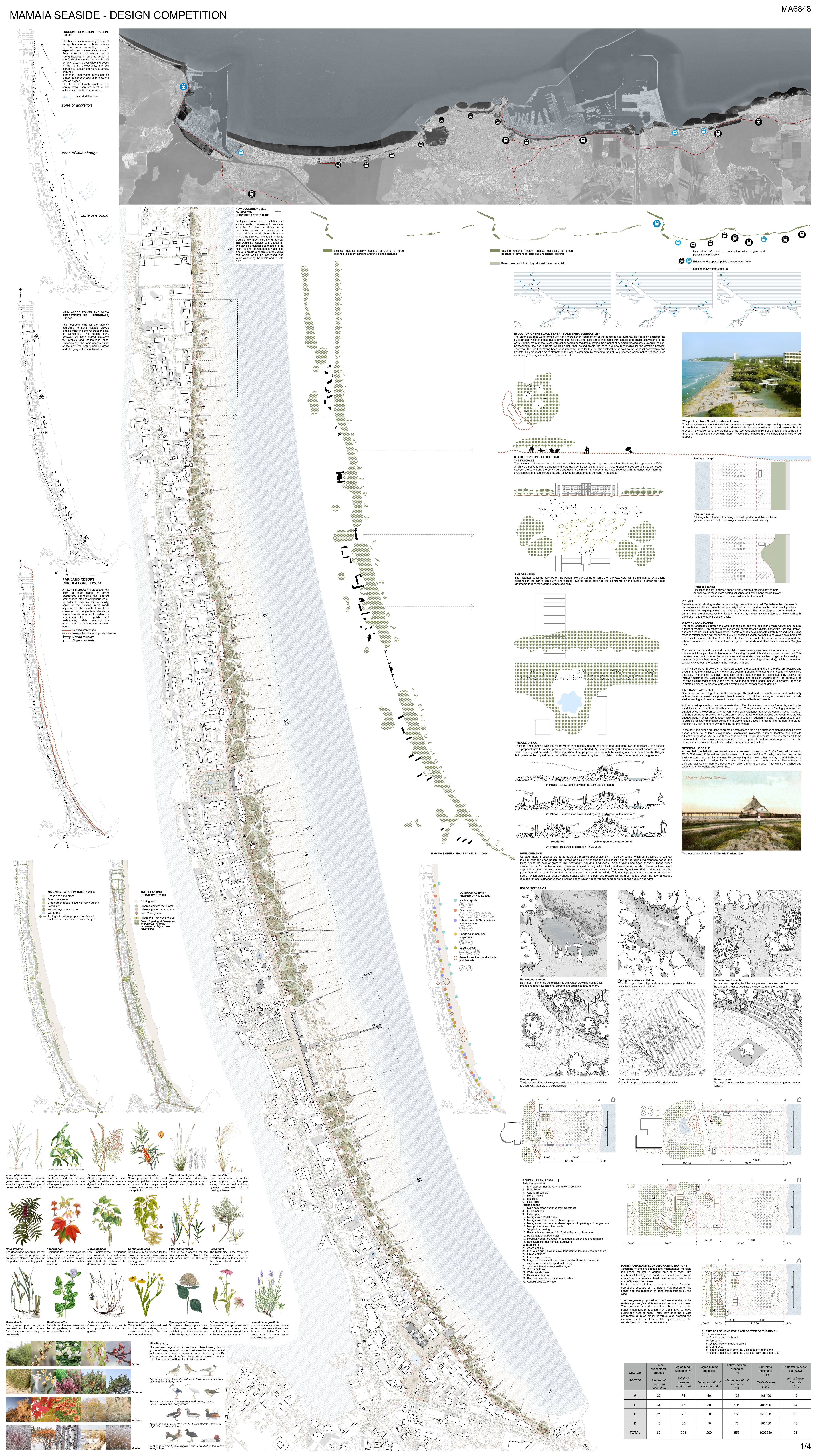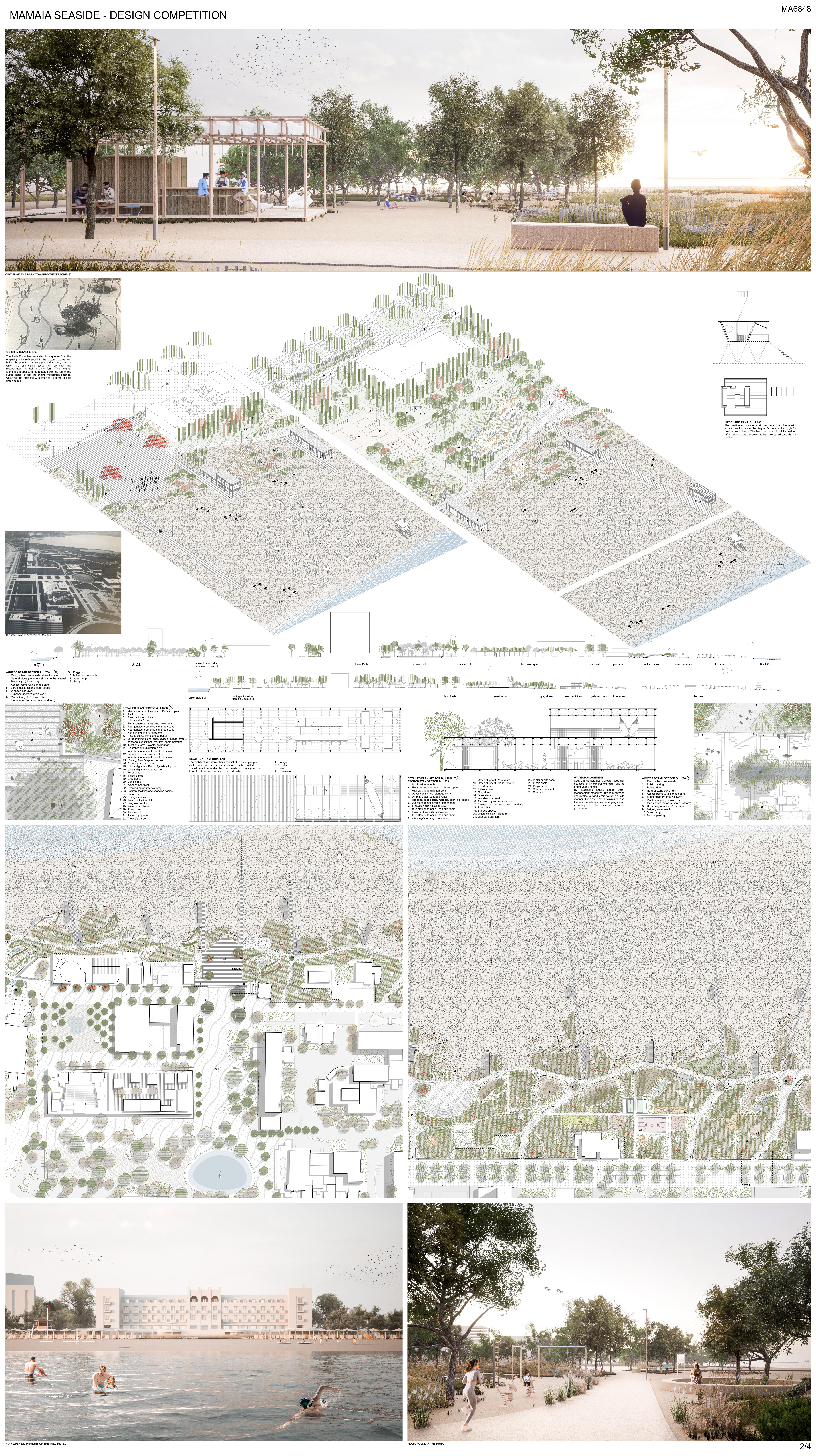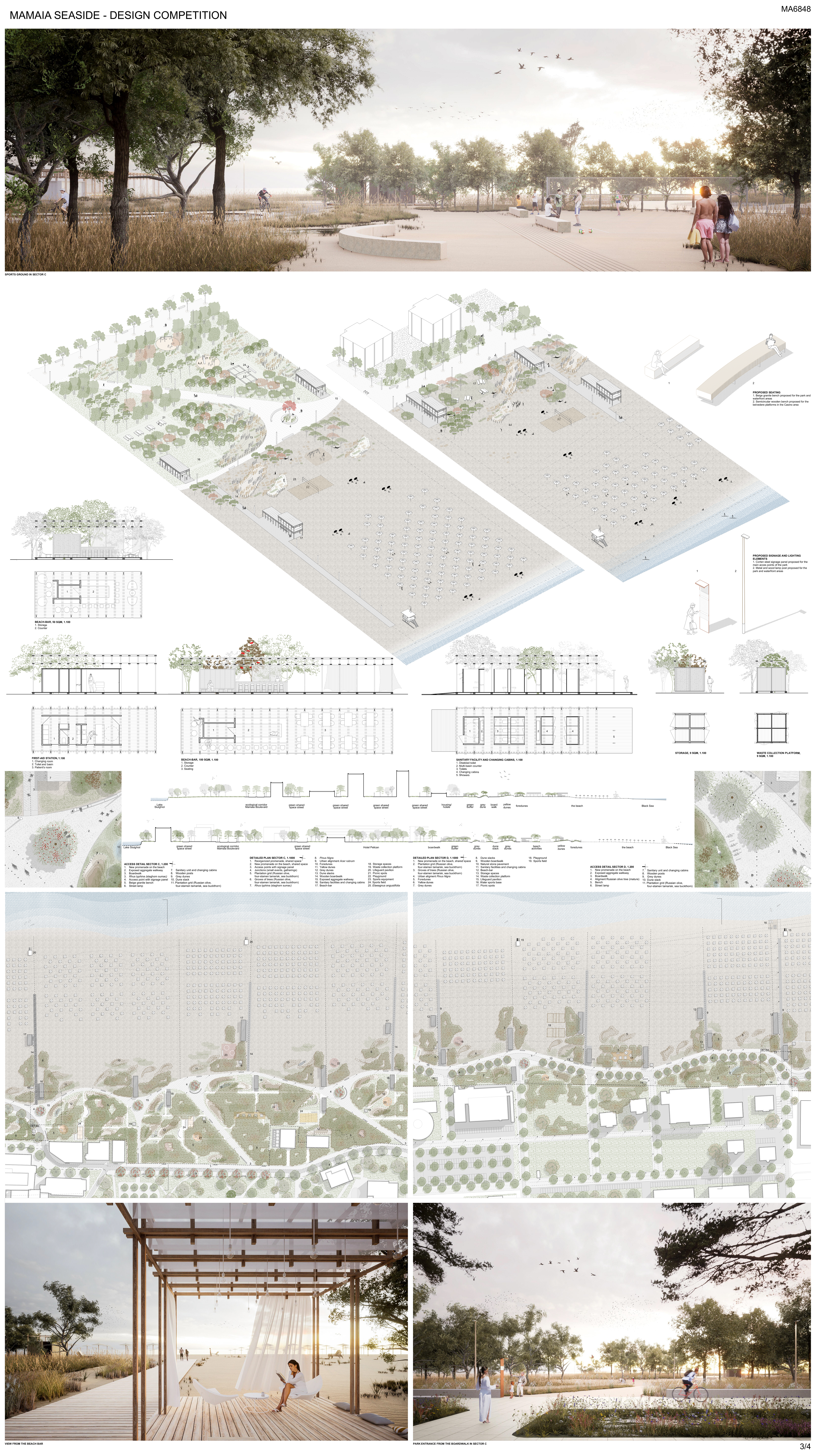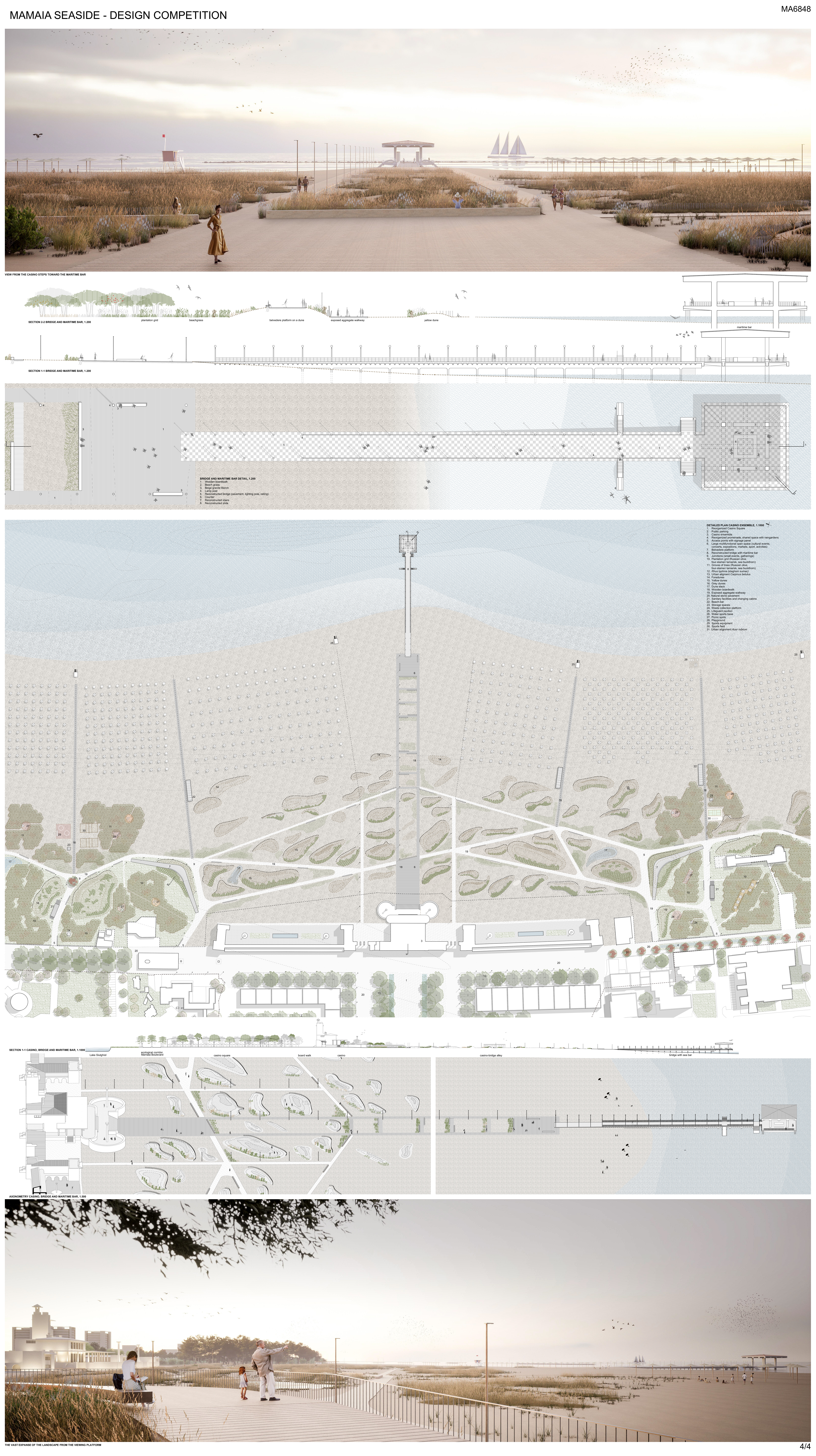110 – MA6848 – NORMA ARHITECTURĂ ȘI URBANISM SRL
Main Author: Vlad Andrei Chiorean, Oana Antonia Filip, Alexandru Nicolae Fleșeriu, Andra Gabriela Hrenciuc, Miruna Moldovan, Péter Eszter, Radu Nicolae Stoica
Specialty collaborators: Manoilă Andreea, landscape architect; Cristian Tetelea

PREMISE
Mamaia’s current slowing tourism is the starting point of the proposal. We believe that the resort’s current relative abandonment is an oportunity to slow down and regain the natural setting, which gave it the picturesque qualities it was originally famous for. The lost ecology can be regained by curating the natural processes in order to build a healthy habitat in which nature is simbiotic with both the tourism and the daily life or the locals.
WEAVING LANDSCAPES
The open landscape between the waters of the sea and the lake is the main natural and cultural quality of Mamaia. The resort’s most successful development projects, especially from the interwar and socialist era, built upon this identity. Therefore, these developments carefully placed the building mass in relation to the natural setting, firstly by spacing it widely so that it is percieved as subordinate to the vast expanse, like the Rex Hotel or the Casino ensemble. Later, in the socialist period, the urban developments were centered around green courtyards and clear connections with Siutghiol Lake.
The beach, the natural park and the touristic developments were interwoven in a straight forward manner which helped them thrive together. By losing the park, this natural connection was lost. This proposal attemps to weave the landscapes and vegetation patches back together by creating or restoring a green backbone (that will also function as an ecological corridor), which is connected typologically to both the beach and the built environment.
The tiny tree grove ‘freckels’, which were present on the beach up until the late ’80s, are restored and used in a manner similar to the interwar and socialist periods, for shading and hosting various leisure activities. The original eye-level perception of the built heritage is reconstituted by placing the interwar buildings into vast expanses of openness. The socialist ensembles will be perceived as isolated building masses above the treeline, while the ‘forested’ beachfront will allow small openings in strategic places, in order to restore the overall original atmosphere of Mamaia.

TIME BASED APPROACH
Sand dunes are an integral part of the landscape. The park and the beach cannot exist sustainably without them, because they prevent beach erosion, control the blasting of the sand and provide shelter, nesting and breeding areas for various species of birds and insects.
A time based approach is used to recreate them. The first ‘yellow dunes’ are formed by moving the sand locally and stabilizing it with marram grass. Then, the natural dune forming processes are curated by using wooden posts which will help create foredunes against the dominant wind. Together with the tree grove ‘freckels’, they create small scale ‘nests’ oriented towards the beach, that provide shaded areas in which spontaneous activites can happen throughout the day. The open-ended result is suitable for experimentation during the implementation phase in order to find the right formula for touristic activities to coexist with a healthy natural habitat.
In the park, the dunes are used to create diverse spaces for a high number of activities, ranging from beach sports to children playgorunds, observation platforms, outdoor theatres and seaside educational gardens. We believe the didactic side of the park is very important in order for it to be appropriated by the locals, cherished and expanded upon. The nature based approach has to be tested and implemented here first in order to become normal practice.

GEOGRAPHIC SCALE
A green belt coupled with slow infrastructure is proposed to strech from Corbu Beach all the way to Eforie Sud resort. If the nature based approach will be succesful in Mamaia, more beaches can be easily restored in a similar manner. By connecting them with other healthy natural habitats, a continuous ecological corridor for the entire Constanța region can be created. This anfilade of different habitats can therefore become the region’s main green areas, that will be cherished and taken care of by tourists and locals alike.

MAINTANANCE AND ECONOMIC CONSIDERATIONS
According to the exploitation and maintanance manuals the beach requires a certain amount of work, like mechanical leveling and sand relocation from accretion areas to erosion areas at least once per year, before the start of the summer season.
Nature based solutions reduce the need for such operations because of the natural stabilisation of the beach and the reduction of sand transportation by the wind.
The tree groves proposed in zone 2 are essential for the rentable property’s maintenance and economic success. Their presence near the bars keep the tourists on the beach much longer because they don’t have to leave during the heat of noon. Thus, they earn the private contractors a much higher revenue, also creating the incentive for the renters to take good care of the vegetation during the summer season.











